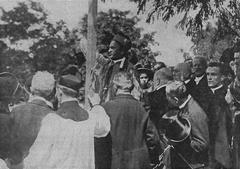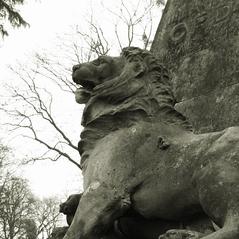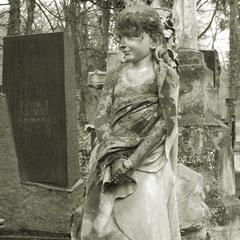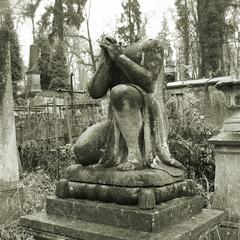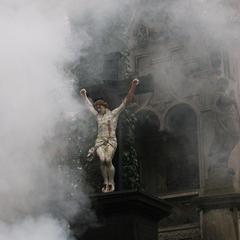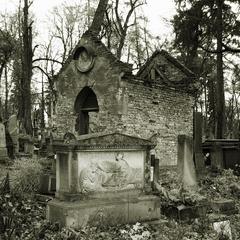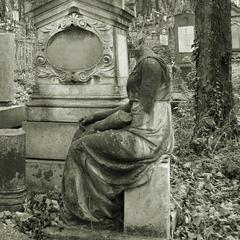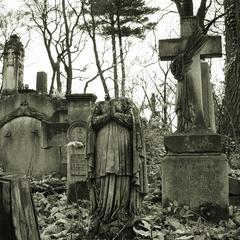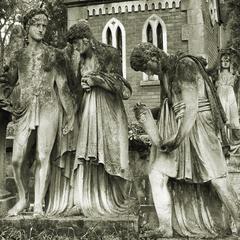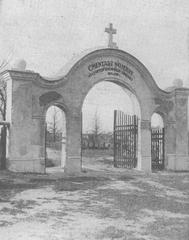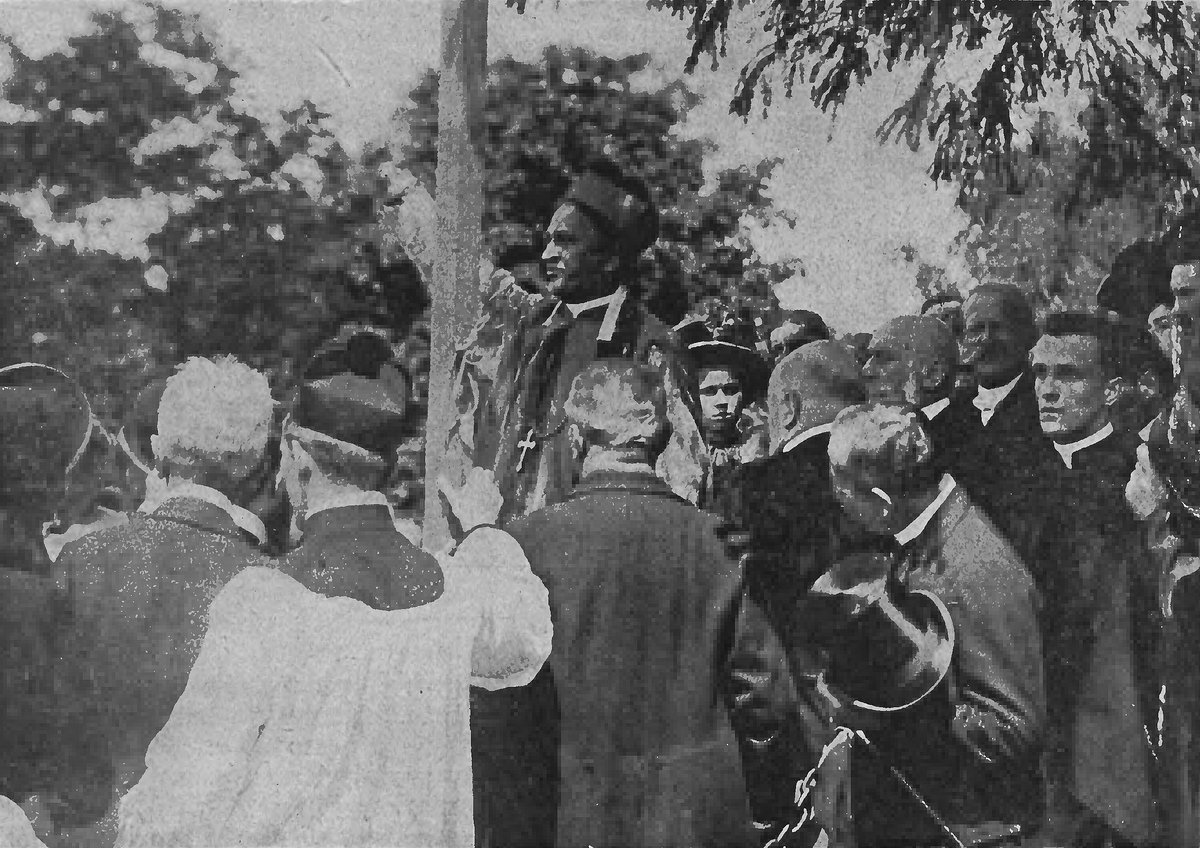
Lychakiv Cemetery Visiting Hours, Tickets, and Historical Significance in Lviv, Ukraine
Date: 14/06/2025
Introduction: Lychakiv Cemetery – A Cultural and Historical Landmark
Lychakiv Cemetery in Lviv, Ukraine, stands as one of Eastern Europe’s most significant necropolises, offering a compelling journey into the region’s layered history, art, and collective memory. Established in 1786 during the Austro-Hungarian Empire, Lychakiv originally served as a burial ground for Lviv’s elite and intelligentsia before expanding into a vast, multicultural memorial landscape. Spanning approximately 40 hectares, the cemetery features over 300,000 graves and thousands of monuments, with sculptural works ranging from neoclassical to Art Nouveau styles, created by some of the era’s most renowned artists.
Functioning as an open-air museum, Lychakiv Cemetery is the final resting place of numerous notable figures: Ukrainian icons like Ivan Franko, Polish nobility, and representatives of Armenian, Jewish, and other communities. The cemetery’s grounds also reflect Lviv’s complex past, shaped by Austro-Hungarian, Polish, Soviet, and Ukrainian rule. Its memorials—ranging from the Cemetery of the Defenders of Lwów to new tributes for recent Ukrainian soldiers—underscore ongoing narratives of identity, resistance, and memory.
Whether you are a history buff, art lover, or a traveler seeking to understand Lviv’s multicultural heritage, this guide provides comprehensive information about Lychakiv Cemetery, covering its history, notable burials, visiting details, and practical tips (dziedzictwo.org; lviv-lychakiv.com.ua; jetsettogether.com).
Table of Contents
- Historical Overview
- Artistic Heritage and Notable Burials
- Cemetery as a Mirror of Multicultural Lviv
- Visiting Lychakiv Cemetery
- Preservation and Contemporary Significance
- Frequently Asked Questions (FAQ)
- References and Resources
Historical Overview
Origins and Early Development (1786–1850)
Lychakiv Cemetery was established in 1786, following imperial reforms mandating cemeteries be located outside city limits to promote public health (dziedzictwo.org). Initially designated for the city’s upper classes, its design reflected Enlightenment ideals, with alleys, hills, and lush greenery. From its inception, Lychakiv accepted people of various faiths—Catholic, Orthodox, Protestant—mirroring Lviv’s multi-ethnic character (heritageandmemorystudies.humanities.uva.nl).
By 1850, Lychakiv had become Lviv’s principal burial ground (jetsettogether.com).
19th–Early 20th Century Expansion
The 19th century saw Lychakiv’s transformation into an architectural and artistic showcase, expanding to nearly 40 hectares. Elaborate tombs, chapels, and mausoleums adorned with intricate sculptures in neoclassical, romantic, and art nouveau styles were constructed (dziedzictwo.org). Multilingual inscriptions documented the city’s diversity.
20th Century and Beyond: War, Neglect, and Renewal
Lychakiv’s history closely follows Lviv’s political changes. During the Polish interwar period, the cemetery became a center for Polish remembrance, notably with the Cemetery of the Defenders of Lwów (pamiecbliskich.com). The Soviet era brought neglect, symbolic marginalization of Soviet burials, and vandalism. In 1975, restoration began, and in 1991 Lychakiv was declared a historical and cultural museum (jetsettogether.com).
Artistic Heritage and Notable Burials
Monumental Sculpture and Art
Lychakiv Cemetery is famed for its sculptural artistry, with more than 3,000 monuments crafted by artists such as Hartman Witwer and Teodoziia Bryzh (lviv-lychakiv.com.ua; guideme.com.ua). Motifs include angels, broken columns, and allegorical figures, symbolizing virtues, untimely death, and remembrance.
Notable Monuments:
- Ivan Franko: Writer and national awakener; his grave features a striking monument of a stonemason (lviv.travel).
- Solomiya Krushelnytska: Celebrated opera singer; her tomb is adorned with an elegant sculpture (lonelyplanet.com).
- Volodymyr Ivasiuk: Composer; memorialized by a bronze statue at a piano (guideme.com.ua).
- Field of Mars and Hill of Glory: Military memorials honoring soldiers from various conflicts (lviv-lychakiv.com.ua).
Notable Burials
- Ivan Franko (1856–1916): Ukrainian poet, writer, and political activist (lviv-lychakiv.com.ua).
- Solomiya Krushelnytska (1872–1952): World-renowned soprano.
- Markiyan Shashkevych (1811–1843): Literary revival leader.
- Volodymyr Ivasyuk (1949–1979): Composer of “Chervona Ruta.”
- Stefan Banach (1892–1945): Mathematician.
- Yevhen Petrushevych (1863–1940): President of the Western Ukrainian People’s Republic.
- Gabriela Zapolska: Playwright (memorial).
- Other notables: Artists, scientists, and war heroes from various communities (dziedzictwo.org; discover-ukraine.info).
Cemetery as a Mirror of Multicultural Lviv
Lychakiv’s graves and monuments document Lviv’s multiethnic tapestry. Inscriptions appear in Polish, Ukrainian, Armenian, German, Russian, Latin, and Greek (guideme.com.ua). Sections such as the Eaglets’ Cemetery (Cemetery of the Defenders of Lwów) honor Polish youth fallen during the Polish-Ukrainian War of 1918–1919, while memorials for Soviet soldiers and recent Ukrainian heroes chart the city’s evolving identities (discover-ukraine.info).
The cemetery also contains graves of Armenians, Jews, Germans, and other minorities, reflecting Lviv’s cosmopolitan past (discover-ukraine.info; heritageandmemorystudies.humanities.uva.nl).
Visiting Lychakiv Cemetery
Hours and Ticket Information
- Opening Hours: Daily, typically from 9:00 AM to 6:00 PM. Last admission is 30–60 minutes before closing. In summer, hours may be extended (lviv-lychakiv.com.ua).
- Ticket Prices: Generally 50–80 UAH for adults, with discounts for students and seniors. Tickets are purchased at the main gate; check the official website for updates.
- Guided Tours: Available in multiple languages. Booking ahead is advised, especially in peak seasons.
Accessibility
- Main Paths: Paved and generally wheelchair accessible.
- Older Sections: May have uneven or steep terrain; comfortable shoes are essential.
- Mobility Assistance: Electric carts available for visitors with limited mobility.
Guided Tours
- Options: Thematic tours focusing on art, history, or notable individuals are offered.
- Booking: Reserve in advance for non-Ukrainian languages (Evendo Guide).
Travel Tips
- Dress Code: Modest attire in respect of the cemetery’s nature.
- Photography: Permitted, sometimes for a small fee; always be respectful (Evendo Guide).
- Facilities: Restrooms near the entrance; bring water and snacks, as there are no cafes.
- Public Transport: Easily accessible by tram No. 7 or buses 8 and 29. Taxi and rideshare options are also available.
Nearby Attractions
Combine your visit with nearby Lviv landmarks for a richer experience:
- Lviv Old Town and Rynok Square
- Armenian Cathedral
- Lviv Opera House
- Shevchenkivskyi Hay (Museum of Folk Architecture and Culture)
- Lubomirski Palace (Trek Zone)
Preservation and Contemporary Significance
After decades of Soviet neglect, restoration began in the late 20th century, with international cooperation (notably between Ukraine and Poland) supporting the renewal of monuments and landscaping. Ongoing projects ensure the preservation of Lychakiv’s artistic heritage, while its status as a national monument and museum fosters education and remembrance (pamiecbliskich.com; lviv-lychakiv.com.ua).
The cemetery continues to serve as a living site of memory, with new burials and commemorations for contemporary Ukrainian heroes, bridging past and present (heritageandmemorystudies.humanities.uva.nl).
Frequently Asked Questions (FAQ)
Q: What are the visiting hours?
A: Daily from 9:00 AM to 6:00 PM. Hours may vary seasonally; check the official website.
Q: How much are tickets?
A: 50–80 UAH for adults, discounts for students and seniors. Tickets at the main entrance.
Q: Are guided tours available?
A: Yes, in multiple languages; book in advance for English or other foreign languages.
Q: Is the cemetery wheelchair accessible?
A: Main paths are accessible, though some older areas may be challenging. Electric carts available.
Q: Is photography allowed?
A: Yes, for a small fee. Please be respectful and avoid photographing ceremonies.
Q: How do I get to the cemetery?
A: Located at Mechnykova Street, 33, in Lviv’s Lychakivskyi District. Accessible by tram 7, buses 8 and 29, or taxi.
Visuals and Suggested Media
Other recommended visuals:
- The neo-Gothic main gate (alt: “Lychakiv Cemetery neo-Gothic main gate”)
- The Cemetery of the Defenders of Lwów (alt: “War memorial at Lychakiv Cemetery”)
- Aerial view of the cemetery (alt: “Aerial view of Lychakiv Cemetery, Lviv”)
References and Resources
- dziedzictwo.org
- lviv-lychakiv.com.ua
- discover-ukraine.info
- evendo.com
- jetsettogether.com
- heritageandmemorystudies.humanities.uva.nl
Summary: Why Visit Lychakiv Cemetery?
Lychakiv Cemetery is much more than a burial ground—it is a living museum of Lviv’s layered past, with exquisite funerary art, commemorative monuments, and a unique multicultural atmosphere. Its well-managed visitor experience, with clear visiting hours, affordable tickets, and guided tours, makes it accessible to all. The ongoing preservation efforts ensure that Lychakiv remains a place of reverence, learning, and reflection for generations to come.
Enhance your visit by downloading travel apps like Audiala for audio tours and maps, and explore related historical sites for a deeper dive into Lviv’s remarkable heritage.
